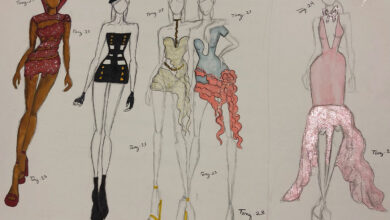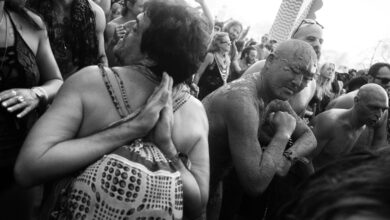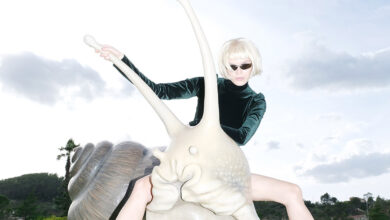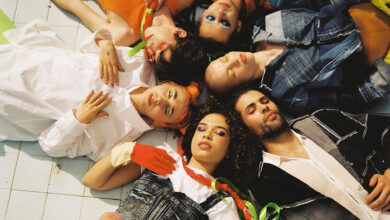An exhibition at Moscow’s Kremlin Museums marks the 100th anniversary of Paul Poiret’s visit to Moscow and St. Petersburg.
Text by Anna Battista
It may seem unusual to tourists visiting Moscow entering the Kremlin to admire its cathedrals and discover the history of Russia, finding in the Assumption Belfry and the One-Pillar Chamber of the Patriarch’s Palace a fashion exhibition dedicated to a French couturier. Yet “Poiret – King of Fashion” has actually got more connections with Russia than with New York, where some of the items included here where showcased in 2007, when the Metropolitan Museum celebrated the French couturier.
 This event – supported by different museums all over the world, among the others the Musée Galliera in Paris, the Musee International de perfumerie in Grasse, the Victoria and Albert Museum in London and the State Hermitage Museum in St Petersburg – marks indeed the 100th anniversary of Poiret’s visit to Moscow and St Petersburg, where he presented his collections. When he returned from this trip in 1911, Poiret designed a collection inspired by traditional Russian costumes and named ‘Kazan’ after a Russian city.
This event – supported by different museums all over the world, among the others the Musée Galliera in Paris, the Musee International de perfumerie in Grasse, the Victoria and Albert Museum in London and the State Hermitage Museum in St Petersburg – marks indeed the 100th anniversary of Poiret’s visit to Moscow and St Petersburg, where he presented his collections. When he returned from this trip in 1911, Poiret designed a collection inspired by traditional Russian costumes and named ‘Kazan’ after a Russian city.
The son of a cloth merchant, Poiret (1879-1944) showed great talent for the visual arts since he was a child. As a young man he worked for an umbrella maker, while selling fashion drawings and ideas to dressmakers.
In 1898 he started working for Jacques Doucet’s maison: here he learnt the secrets of the profession and Doucet, understanding Poiret’s passion for details and theatricality, asked him to design the costumes for some of his clients, actresses Madame Rejane and Mistinguett.
After working also for the House of Worth, Poiret launched his own maison in 1903, becoming famous for his spectacular window displays. Two years later Poiret married Denise Boulet who became his muse and designed the kimono-cape “Révérend” or “Confucius”, a bordeaux rectangle-shaped wool coat with Chinese motifs, tapping into the Orientalist trend that dominated fashion in the first decades of the 1900s.
During these years Poiret revolusionised the way women dressed, coming up with less-restrictive silhouettes, declaring in this way a sort of fashion war to Inès Gaches-Sarraute, the creator of the straight-front corset that, constricting the female body, gave it a hourglass shape.

Poiret’s first designs – in beautiful shades of orange, lemon, green and blue – were inspired by the Directoire style. Among the most important designs from this period there is an evening dress in irovy satin with an Empire line called “Joséphine” (1907) decorated with a rose on the chest (the flower became the symbol of the maison).
In 1909 Poiret moved his fashion house to an 18th century house surrounded by a park. The new location turned into the perfect place for mundane parties or for presenting his new designs.
In the meantime, Poiret continued his research for new inspirations: influenced by the sets and costumes of Russian Léon Bakst for the Ballets Russes, Poiret focused on Oriental designs: he designed the jupe entravêe, a long and straight skirt below the knee, that he transformed in 1911 into the jupe-culotte, a pair of harem pants worn under a tunic that, while creating a scandal, also launched a new ideal of woman, a sophisticated yet bohemian Schéhérazade.

To advertise the new trend Poiret organised a spectacular event in costume in 1911 that he called “The One Thousand and Second Night”. For the occasion he turned the maison and its park into a sultan’s dream designing a special dress in silver and green lame with harem pants and a top covered in celluloid gems in bright shades of blue, green, red and yellow.
Poiret carried out further experiments in Oriental design a few years later: he inserted wire in the hem of his tunics creating the iconic “lampshade” silhouette that stood away from the body (an idea he reused in the costumes for “Le Minaret”).
The French designer then moved on, taking inspiration from Russian couturière Madame Lamanova and discovering also the Wiener Werkstätte. During a visit to Vienna he met Gustav Klimt and Emilie Flöge and found new inspirations in Joseph Olbrich and Otto Wagner’s architectures, Kolo Moser’s pieces of furniture and Josef Hoffman’s vases and cutlery, understanding that fashion is only one part of a vast movement that reunites different arts together.
Back to Paris, he launched the Atelier Martine, a workshop where a group of young women created textiles for cloths and house furnishings, carpets, designs for wallpaper, pieces of furniture and lamps.

Poiret also asked painter Raoul Dufy to create designs for his textiles and launched the fragrance and beauty company Rosine, named after his first daughter, becoming the first fashion designer to associate his name with a perfume and the first to influence, not only the way women dressed, but also their lifestyles.
Unable to adapt to the new trends, by the late 1920s the maison found itself on the brink of bankruptcy and with new designers such as Chanel arriving on the scene, Poiret soon went out of fashion.

“King of Fashion” takes its name from the designer’s autobiography released in the ‘30s and opens in the One-Pillar Chamber of the Patriarch’s Palace with the first designs Poiret did for Doucet and his early designs such as a kimono coat with extraordinary long sleeves and a 1907 brown coat with removable hood.

Among the most beautiful designs showcased here there is a 1910 yellow crepe-de-chine and satin summer dress embroidered with flowers (borrowed from the collections of the State Hermitage Museum in St. Petersburg).
There is emphasis in this part also on costumes, as proved by a Bacchus tunic and wig (1912) and a pair of Bacchante sandals, and on accessories, including a study for a helmet-like coiffure by Madeleine Panizon (1925), intricately embroidered or beaded hats from 1911 and 1913, and promotional materials like fans and mirrors advertising Rosine’s fragrances.
Poiret’s creations are then compared to other designs from the same period, such as a black pleated dress by Mariano Fortuny (1920) and a white and blue crepe-de-chine dress with soft black fur trimming and metal thread embroideries from Anna Gindus’ workshop.
Poiret’s luxury and grandeur are represented by a silk tulle dress with silver thread, lace, Venetian pearls and silk fabric flowers, while a brown sack dress with geometric motifs that belonged to Denise Poiret perfectly shows the relaxed and simple forms favoured by the couturier.
This first part also includes the maison’s letterhead designed by Bernard Naudin and Paul Iribe in 1906 and beautiful illustrations by George Barbier and Georges Lepape, the first bills issued by the maison, boxes of Rosine perfumes and fragrance adverts, and Russian women’s magazines from the early 1900s.
The section in the Assumption Belfry opens instead with the 1924 “La Flute” dress in black and white, with a brick red day dress (both from 1924) and a 1913 yellow mantle (all from the Victoria & Albert Museum collections).
Though this second part features quite a few designs – including a 1923 recital dress in black and gold attributed to Poiret, and a blue and gold stage dress – it mainly focuses on photography and illustrations.
The pictures portray women in the “Piazetta” evening coat (1926), in an evening dress in Oriental style (1927), donning the “Moliere” model, a coat edged with chinchilla, or further iconic designs such as the “Apollon” coat and the “Mexico”, “Panthenon” and “Academicien” models (note for collectors/photography fans: many images on display are by the Lipnitzki Studio).
There are also more famous images such as one portraying Denise in the “Mythe” dress (1919) with its lame bodice and skirt covered in monkey fur, or rare pictures like one showing actress Madeleine Rodriguez wearing a Poiret design in early horror film Le Fantôme du Moulin Rouge (1925), directed by René Clair.
Letterheads, sketches by Dufy, beautiful illustrations by Alexandre Iacovleff for La Gazette du Bon Ton, or by Lepape, Charles Martin and André Marty, and adverts for perfumes with exotic names – Maharadjah, Aladin, Le Fruit Deféndu, Pierrot, Antinea and Le Balcon, Le Bosquet d’Apollon – complete this part of the exhibition.
This section in the Assumption Belfry – incorporating also videos and images from the films in which Poiret acted and for which he worked as a scene-designer and costumier – briefly looks also at further collaborations, showcasing textiles created with Raoul Dufy and silver shoes with rhinestone decorations or shoes with rose motifs made by Perugia for Poiret in 1924, but embroidered by the Atelier Martine girls.
“I am an artist, not a dressmaker”, Poiret claimed in 1913 and, looking at the projects, designs and collaborations showcased here, it’s clear that “the King of Fashion” was not only a talented designer, but also a refined connoisseur of the arts.
“Poiret: King of Fashion” is at the Kremlin Museums, Moscow, Russia, until 15th January 2012.
















